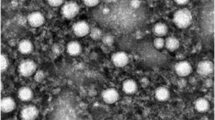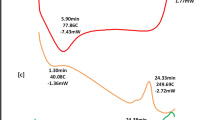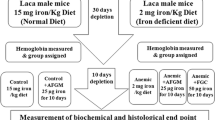Abstract
Cholecalciferol, is a fat soluble vitamin D3 (Vit.D3), recognized in promoting bone health in children and adults and also it has other health benefits. Vit.D3 has suggested being dependent on bile salts for the formation of mixed micelles which is a pre requisite for its absorption. The efficiency of oral absorption of conventional Vit.D3 is approximately 50 %. Arachitol Nano™ is a commercially available nanoparticle based novel drug delivery system (NDDS) of Vit.D3. Data on the uptake of Vit.D3 from the NDDS (Arachitol Nano™) through the intestinal epithelium is not documented. The aim of the study was to investigate the absorption of a nanoparticle based NDDS of Vit.D3 (Arachitol Nano™) using everted rat intestinal sac technique. The results of the study suggested that Vit.D3 from Arachitol Nano™ showed a nonspecific absorption through various segments of rat small intestine, with high flux, permeability coefficient and percentage of absorption (79.21 ± 0.23, 76.55 ± 0.24 and 77.73 ± 0.24 % for duodenum, jejunum and ileum). The average absorption of Arachitol Nano™ was 77.83 ± 0.24 % through rat small intestine. The predicted human absorption may be more than 90 %. The study demonstrates that water soluble nanoparticle Vit.D3 (Arachitol Nano™) can substantially increase the oral absorption of the vitamin D3 and thus can be useful in the oral delivery of vitamin D3.







Similar content being viewed by others
References
Animal Research Advisory Committee (ARAC) (2010) Guidelines for euthanasia of rodents using carbon dioxide. office of animal care and use (OACU). http://oacu.od.nih.gov/ARAC/documents/Rodent_Euthanasia_Adult.pdf
Balimane PV, Chong S, Morrison RA (2000) Current methodologies used for evaluation of intestinal permeability and absorption. J Pharmacol Toxicol Methods 44:301–312
Basu TK, Donaldson D (2003) Intestinal absorption in health and disease: micronutrients. Best Pract Res Clin Gastroenterol 17:957–979
Bothiraja C, Pawar AP (2011) Improved bioavailability of orally administered andrographolide from pH-sensitive nanoparticles. Eur J Drug Metab Ph 35:123–129
Bothiraja C, Pawar AP, Dama GY, Joshi PP, Shaikh KS (2012) Novel solvent-free gelucire extract of Plumbago zeylanica using non-everted rat intestinal sac method for improved therapeutic efficacy of plumbagin. J Pharmacol Toxicol Methods 66:35–42
Crane RK, Wilson TH (1958) In vitro method for the study of the rate of intestinal absorption of sugars. J Appl Physiol 12:145–147
Diarrassouba F, Garrait G, Remondetto G, Alvarez P, Beyssac E, Subirade M (2015) Food protein-based microspheres for increased uptake of vitamin D3. Food Chem 173:1066–1072
Gonnet M, Lethuaut L, Boury F (2010) New trends in encapsulation of liposoluble vitamins. J Control Release 146:276–290
Grossmann RE, Tangpricha V (2010) Evaluation of vehicle substances on vitamin D bioavailability: a systematic review. Mol Nutr Food Res 54:1055–1061
Holick MF (2009) Vitamin D status: measurement, interpretation and clinical application. Ann Epidemiol 19:73–78
Hollis BW (2005) Circulating 25-hydroxyvitamin D levels indicative of vitamin D sufficiency: implications for establishing a new effective dietary intake recommendation for vitamin D. J Nutr 135:317–322
Lamberg-Allardt C (2006) Vitamin D in foods and as supplements. Prog Biophys Mol Biol 92:33–38
Luo Y, Teng Z, Wang Q (2012) Development of zein nanoparticles coated with carboxymethyl chitosan for encapsulation and controlled release of vitamin D3. J Agric Food Chem 60:836–843
Moshtaghie AA, Sabet-Jahromi M (1992) Identification of transferrin in cytosol isolated from rat intestinal mucosal cells. Biochem Soc T. 21:71S
Mozafari MR, Khosravi-Darani K, Borazan GG, Cui J, Pardakhty A, Yurdugul A (2008) Encapsulation of food ingredients using nanoliposome technology. Int J Food Prop 11:833–844
Ovesen L, Brot C, Jakobsen J (2003) Food contents and biological activity of 25-hydroxyvitamin D: a vitamin D metabolite to be reckoned with? Ann Nutr Metab 47:107–113
Rautureau M, Rambaud JC (1981) Aqueous solubilization of vitamin D3 in normal man. Gut 22:393–397
Sathya Priya LS (2012) Development and validation of RP-HPLC method for the estimation of vitamin D3 in liquid formulation. Res Gate Pharm Sci 1:1
Sharma P, Chawla HPS, Panchagnula R (2002) LC determination of cephalosporins in in vitro rat intestinal sac absorption model. J Pharm Biomed Anal 27:39–50
Sun F, Lu C, Chen J, Liu S, Liu N, Wang K, Liu C (2012) Nanoparticles based on hydrophobic alginate derivative as nutraceutical delivery vehicle: vitamin D3 loading. Artif Cells Blood Substit Biotechnol 40:113–119
Thompson GR (1971) Absorption of fat-soluble vitamins and sterols. J clin Pathol Suppl 5:85–89
Thompson GR, Lewis B, Booth CC (1966) Absorption of vitamin D3–8H in control subjects and patients with intestinal malabsorption. J Clin Invest 45:94–102
Versantvoort CHM, Rompelberg CJM, Sips AJAM. Methodologies to study human intestinal absorption. A review. RIVM report 630030 001, 2000, 1–55
Vilches AP, Jimenez-Kairuz AF, Alovero F, Olivera MF, Allemandi DA, Manzo RH (2002) Release kinetics and up-take studies of model fluoroquinolones from carbomer hydrogels. Int J Pharm 246:17–24
Wagner CL, Greer FR (2008) Prevention of rickets and vitamin D deficiency in infants, children and adolescents. Pediatrics 122:1142–1152
Wang L, Jiang X, Xu W, Li C (2007) Complexation of tanshinoneIIA with 2-hydroxypropyl-b-cyclodextrin: effect on aqueous solubility, dissolution rate, and intestinal absorption behaviour in rats. Int J Pharm 341:67
Wilson TH, Wiseman G (1954) The use of sacs of everted small intestine for the study of the transference of substances from the mucosal to the serosal surface. J Physiol 123:116–125
Acknowledgments
The authors (C. Bothiraja, A. Pawar, G. Deshpande) declare that they have no conflict of interest. This study was supported by Abbott India Limited.
Author information
Authors and Affiliations
Corresponding author
Additional information
The study was done by Department of Pharmaceutics, Bharati Vidyapeeth Deemed University, Poona College of Pharmacy, Pune.
Rights and permissions
About this article
Cite this article
Bothiraja, C., Pawar, A. & Deshpande, G. Ex-vivo absorption study of a nanoparticle based novel drug delivery system of vitamin D3 (Arachitol Nano™) using everted intestinal sac technique. Journal of Pharmaceutical Investigation 46, 425–432 (2016). https://doi.org/10.1007/s40005-016-0235-2
Received:
Accepted:
Published:
Issue Date:
DOI: https://doi.org/10.1007/s40005-016-0235-2




